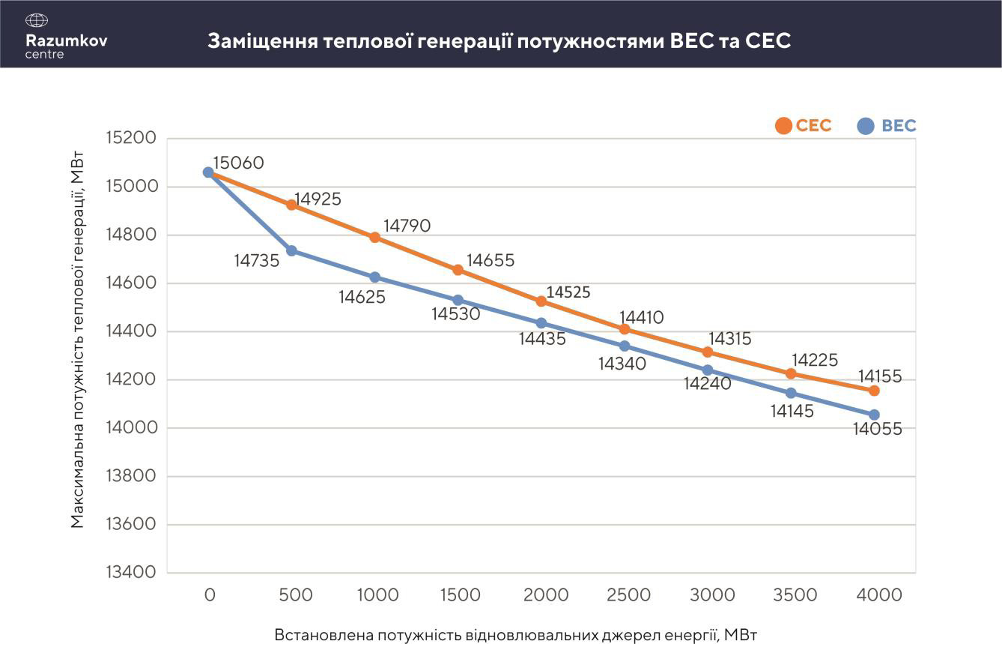Renewable energy sources (RES) now play a key role for the EU energy system security ← the Dutch and German experience shows that under optimal combination of wind and solar power generation with electricity storage systems, the energy system is stable, due to cross balancing, and does not require additional thermal generation capacities.
Meanwhile, daily fluctuations in the working capacity of coal-fired generation during a week may reach 50–90%, working capacity of such thermal power plants can drop by 70% within hours. Manoeuvrability and flexibility of TPPs are characterised by the following key indicators: minimum load; speed of loading/
unloading; duration of hot/cold start. The minimum load of modern coal plants is close to 25–40%, while the best German sites show 13% — many times lower than relatively old plants in China or India. The lower the minimum load is, the fewer expensive stop/start cycles a TPP has to go through, the lower the consumption is in the hot/rotating reserve mode.
The cost of old TPP modernisation and upgrade of all main components of a coal plant, from fuel supply to exhaust gas cleaning units and other auxiliary equipment, is estimated at €500...€750 per kW of installed capacity. The main limitations of such modernisation include stability of combustion in the boiler furnace and compliance of the steam turbine case surface metal with the limits of mechanical and thermal stress.
Higher manoeuvrability of coal-fired TPPs increases their operating costs, but combined with RES, it ensures flexibility and profitability the entire energy system, attracting new investments.
Under this concept, Ukraine may even now launch a project of installing new alternative energy facilities cum electricity storage systems. In one of Razumkov Centre’s studies, two scenarios were calculated.
The first one presumes integration of wind and solar power plants in Ukraine’s UES at a level of up to 10%, replacing 1.88 GW of thermal power plant capacity. The minimum load of TPP units is 4550 MW. The set of power units required for such load to ensure the maximum power ascension rate ΔPmax = 0.051 unit/h, which is sufficient to cover soonest payload change for this scenario of RES implementation.
The second one presumes integration of RES in Ukraine’s UES at a level of up to 25%, replacing 3.21 GW of TPPs. The minimum load of TPP units is 3920 MW. The set of power units required for such load to ensure the maximum power ascension rate ΔPmax = 0.042 units/h, which is insufficient to cover payload jumps. The deficit is approximately 0.9 GW.
Replacement of thermal generation with WPP and SPP capacities (● WPP ● SPP) (Maximum capacity of thermal generation, MW)

Installed capacities of renewable energy sources, MW
This deficit can be covered by electricity storage systems, which are used to equalise the daily load schedule and compensate for sudden load changes — the calculation results are shown in Table. 1.
Table 1. Change in the number of power unit starts/stops depending on electrochemical storage operating capacity
|
TPP |
Working capacity of a storage system, MW |
|||||
|
0 |
500 |
1000 |
1500 |
2000 |
2500 |
|
|
Pmax, MW |
16790 |
16735 |
16700 |
16670 |
16640 |
16605 |
|
Pmin, MW |
4550 |
4705 |
4725 |
4790 |
4805 |
4805 |
|
Number of starts/stops |
2458 |
1928 |
1731 |
1607 |
1502 |
1404 |
|
Installed capacity utilisation factor of a storage system |
0 |
0,94 |
0,86 |
0,79 |
0,74 |
0,70 |
As we can see from Table 1, the effect of storage operation decreases with an increase in its working capacity. Meanwhile, the installed capacity utilisation factor falls from 0.94 at 500 MW to 0.70 at 2500 MW.
In general, every new GW of green generation, after exceeding the permissible connection level of 4.8 GW, will require 0.3 GW of storage capacity. Thus, even today there is a deficit of 0.7 GW of storage capacities.
Summing up, the manoeuvrability of Ukraine's energy system can be raised in wartime, but for this it is necessary, first of all, to restore the financial liquidity of the energy market, to settle the issue of green tariff setting, and to streamline legislative norms on electricity storage system functioning.
https://razumkov.org.ua/statti/rol-vde-u-manevrovosti-energosystemy-ukrainy-v-umovakh-viiny




